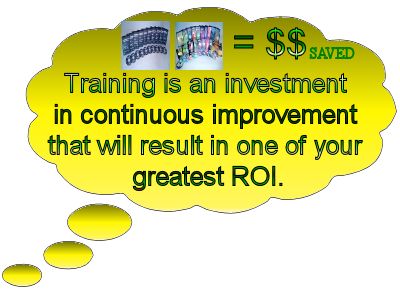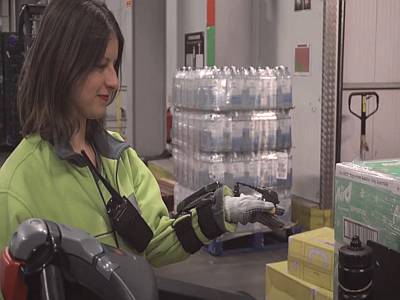
Warehouse Operator Assessment Assessment
Warehouse Operator Assessment :
The Warehouse Operator test above mostly covers warehouse math and measurements, with a question on safety and another on employee responsibility.
Please consider our training while here ...

Study up with one of our distance learning certificate courses. See Vocational Training Courses.
Warehouse Operator Assessment test details:
( 10 Questions )
A visitor created this Warehouse Operator Assessment. We understand some visitors may have visited this page for a 'Warehouse Risk Assessment'. The Warehouse Operator test above mostly covers warehouse math and measurements, with a question on safety and another on employee responsibility. As the test creator did not provide details, we will use this area to share some helpful warehouse risk assessment information including HSE warehouse assessment. So you do not go away empty-handed.
If you would like to make your own warehouse risk assessment, please subscribe.

Manufacturing or Warehouse Jobs?
As the test above concerns warehouse operator jobs, we will start there with some useful information. Then, we'll talk a little about warehouse risk assessment. First, let's answer our visitors' most frequently asked questions, the FAQ.
What is a warehouse job?
A warehouse job involves working in a warehouse. The job is to manage and organize inventory. Warehouse workers are responsible for receiving, storing, and distributing goods within the warehouse. They may also pick and pack orders. They also load and unload trucks. They also keep inventory records.
Warehouse jobs often need workers to use forklifts and pallet jacks. They also use other equipment to move products and materials. Also, warehouse jobs may include inventory counts and inspecting goods for damage. They also involve ensuring that the warehouse is clean and organized. Warehouse jobs are crucial in the supply chain. They ensure that they store and move products well.
Are warehouse jobs good?
Warehouse jobs can be good for people who like working in an active environment. They prefer jobs that offer hands-on tasks. These jobs often offer chances for career growth and skill development. Employees may learn to use many types of tools. They also gain experience in managing inventory. Some warehouse positions have good pay and benefits. This makes them attractive to workers who want stable jobs.
But, warehouse jobs can be tough. They may involve working fast. Also, warehouse jobs may have evening, night, or weekend shifts. The schedule depends on the facility's needs. So, whether a warehouse job is good for a person depends on their preferences. It also depends on their career goals and ability to adapt to the job's demands.
How much do warehouse jobs pay?
Warehouse jobs can pay well and offer benefits. This makes them attractive to workers seeking stable employment. Regardless of industry or location, a warehouse job generally pays about $40,000 per year.
Entry-level positions have hourly wages of $12 to $18. The exact salary depends on the location and job requirements. Workers with experience and special skills can earn higher wages. These range from $15 to $25 per hour or more. Keep in mind that these figures are approximate. They can vary based on location, company size, experience, and industry.
Should I work in production or warehouse?
You may face a question. It would happen if you've been searching for manufacturing warehouses near me. Do I want a job in manufacturing or the manufacturer's warehouse? When deciding whether to work in manufacturing or a warehouse, you must weigh the pros and cons of each role.
In manufacturing, you can expect to make products. You will work with machinery and assemble goods. This role often requires attention to detail. It needs technical skills and the ability to follow precise instructions. The warehouse job may appeal more to those who prefer dynamic work.
When choosing between the two, consider your strengths, interests, and career goals. Those who thrive in a fast-paced, hands-on setting may find production a better fit. Those who prefer a more logistical role may lean towards working in a warehouse.

Warehouse Risk Assessment Advice
When conducting a warehouse risk assessment, it's crucial to consider the safety of employees and compliance with Health and Safety Executive (HSE) guidelines. To effectively manage warehouse employees and mitigate risks, here are some key points to consider:
- Identify and Assess Hazards: Start by identifying potential hazards in the warehouse environment, such as heavy machinery, manual handling of goods, working at heights, and the risk of slips, trips, and falls. Assess these hazards likelihood and potential severity to prioritize risk management efforts.
- Employee Training and Awareness: Ensure that all warehouse employees receive comprehensive training on safe working practices, including proper operation of equipment, manual handling techniques, and emergency procedures. Regular safety briefings and awareness campaigns can reinforce a safety culture within the warehouse.
- Regular Equipment Maintenance: Implement a proactive maintenance schedule for all warehouse equipment and machinery to minimize the risk of malfunctions and accidents. Regular inspections and servicing can help identify and address potential safety issues before they escalate.
- Personal Protective Equipment (PPE): Provide appropriate personal protective equipment, such as high-visibility clothing, hard hats, safety boots, and gloves, to safeguard employees against workplace hazards. Enforce the use of PPE and ensure that it is in good condition.
- Ergonomics and Workstation Design: Optimize workstation layouts and equipment ergonomics to reduce the risk of musculoskeletal injuries and repetitive strain. Consider proper shelving heights, ergonomic lifting aids, and adequate lighting to create a safer work environment.
- HSE Risk Assessment Compliance: Familiarize yourself with the HSE guidelines and regulations relevant to warehouse operations. Ensure your risk assessment and safety procedures align with HSE requirements to maintain legal compliance and safeguard employee well-being.
By prioritizing employee safety, regular risk assessments, and compliance with HSE guidelines, you can effectively manage warehouse risks and create a safer working environment for all employees.
Published:
